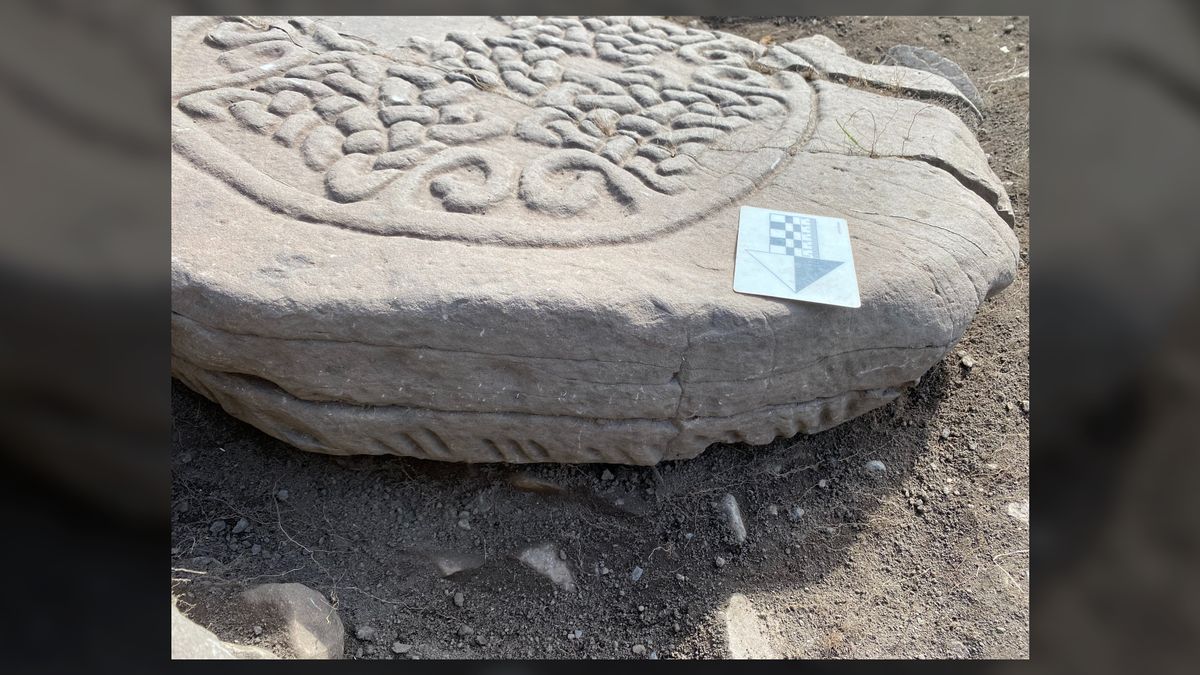Welcome to DU!
The truly grassroots left-of-center political community where regular people, not algorithms, drive the discussions and set the standards.
Join the community:
Create a free account
Support DU (and get rid of ads!):
Become a Star Member
Latest Breaking News
Editorials & Other Articles
General Discussion
The DU Lounge
All Forums
Issue Forums
Culture Forums
Alliance Forums
Region Forums
Support Forums
Help & Search
Anthropology
Related: About this forumRare medieval script discovered on stone carved by Scotland's 'Painted People'
By Kristina Killgrove published about 23 hours ago
1,500-year-old carved stone from the 'Painted People' in Scotland possibly reveals a bull, pelicans and an ancient alphabet.

This image shows a close-up of an ogham alphabet inscription on a Pictish cross slab. (Image credit: Murray Cook / Stirling Council)
Archaeologists and volunteers have discovered a stone bearing a mysterious inscription and carved birds that the Picts of Scotland crafted more than a millennium ago. The cross slab, found in a small cemetery last month, dates to between A.D. 500 and 700, and sheds new light on the historic interaction between heritage and faith in the northern U.K.
The Picts, or "Painted People," were so-named by Roman historians because of their supposed war paint and tattoos ("picti," is the Latin word for "paint"
After the Roman Empire withdrew from the British Isles in the fifth century A.D., Pictish society grew to form a permanent but unstable monarchy intent on protecting its territorial boundaries. Early missionaries from Ireland converted many kings of Pictland to Christianity in the mid-sixth century A.D. Then, at the Battle of Dun Nechtain(opens in new tab) in A.D. 685, the Picts pushed the Britons out of Scotland and created a mini-empire that would last until around A.D. 900 and the arrival of the Vikings.
But the newly uncovered cross slab, found in the Old Kilmadock cemetery near Doune, Scotland, a region that was historically a buffer zone between the Picts and the Romans, and later the Britons, complicates that tidy history. "The cross slab is the first one in this region, and may mean that the residents started to think of themselves as Picts," Stirling Council archaeologist Murray Cook(opens in new tab), who led the recent excavation, told Live Science in an email.
More:
https://www.livescience.com/pictish-stone-with-medieval-alphabet-scotland
3 replies
 = new reply since forum marked as read
Highlight:
NoneDon't highlight anything
5 newestHighlight 5 most recent replies
= new reply since forum marked as read
Highlight:
NoneDon't highlight anything
5 newestHighlight 5 most recent replies
Rare medieval script discovered on stone carved by Scotland's 'Painted People' (Original Post)
Judi Lynn
Nov 2022
OP
padah513
(2,682 posts)1. When I saw the word Ogham, it reminded me of a man named Barry Fell
Ogham looked like a bunch of little lines to me, but he could read it. He died in 94, but he was an interesting man
Warpy
(113,680 posts)2. I always thought the Picts were a Celtic people
given the swirling art they left us. The Ogham writing kind of nails that down. No wonder they gave the Romans hell and were never conquered by anyone until the Vikings came.
Judi Lynn
(163,691 posts)3. Glad you mentioned the Roman military. I also read the Romans were deeply afraid of them.
Evidently they made a powerful impression so long ago! Amazing.